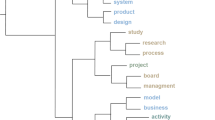Abstract
The literature is indicating an emerging need for customized tools to model how Triple Bottom Line organizations and nonprofit organizations deriving from social innovation projects have to operate to be economically sustainable. Starting from three editions of the top 100 NGOs as ranked by The Global Journal, NGOs are analyzed and classified according to the way in which they create value, generate revenues and collaborate with other organizations to reach their beneficiaries. This helps in defining the Sustainability Model Canvas, highlighting the peculiarities of the most successful nonprofit organizations and understanding their sphere of action. We rely on the analysis of the cases to describe the most common types of sustainability models. We identify and discuss the distinctive features of Triple Bottom Line organizations and the reasons why these organizations require sustainability models that are different from those used in the for-profit sector. We subsequently introduce and discuss the features required in a sustainability model to address the specific characteristics of these organizations. The proposed sustainability model combines multiple goals of these organizations while focusing on their long-term economic sustainability and the value already created in the existing tools for for-profit organizations.
Access this chapter
Tax calculation will be finalised at checkout
Purchases are for personal use only
Similar content being viewed by others
References
Amit R, Zott C (2001) Value creation in e-business. Strateg Manag J 22(6–7):493–520
Anheier HK (2000) Managing non-profit organisations: towards a new approach. Centre for Civil Society, London School of Economics and Political Science
Buttle F (2009) Customer relationship management: concepts and technology
Carroll DA, Stater KJ (2008) Revenue diversification in nonprofit organizations: does it lead to financial stability? J Public Adm Res Theor 19(4):947–966
Chang CF, Tuckman HP (1994) Revenue diversification among non-profits. VOLUNTAS Int J Voluntary Nonprofit Organ 5(3):273–290
Dahan NM, Doh JP, Oetzel J, Yaziji M (2010) Corporate-NGO collaboration: co-creating new business models for developing markets. Long Range Plan 43(2–3):326–342
Fifield P (2008) Marketing strategy masterclass. Routledge
Fischer RL, Wilsker A, Young DR (2011) Exploring the revenue mix of nonprofit organizations: does it relate to publicness? Nonprofit Voluntary Sect Q 40(4):662–681
Freeman RE (1984) Strategic management: a stakeholder approach. Pitman, Boston
Froelich KA (1999) Diversification of revenue strategies: evolving resource dependence in nonprofit organizations. Nonprofit Voluntary Sect Quart 28(3):246–268
Frumkin P, Keating EK (2002) The risks and rewards of nonprofit revenue concentration. Paper presented at the ARNOVA annual conference. Montreal, QC, Canada
Miles MB, Huberman AM (1984) Drawing valid meaning from qualitative data: toward a shared craft. Educ Researcher 13(5):20–30
Osterwalder A, Pigneur Y (2010) Business model generation: a handbook for visionaries, game changers, and challengers. Wiley, London
Weisbrod BA (1998) The nonprofit mission and its financing. J Policy Anal Manage 17(2):165–174
Wilsker AL, Young DR (2010) How does program composition affect the revenues of nonprofit organizations? Investigating a benefits theory of nonprofit finance. Public Finance Rev 38(2):193–216
Yunus M, Moingeon B, Lehmann-Ortega L (2010) Building social business models: lessons from the Grameen experience. Long Range Plan 43(2):308–325
Acknowledgements
We acknowledge the contributions of Elena Perondi during the development of this research and of Francesca Bazurro and Andrea Vucetich in the data gathering and data analysis. The usual disclaimers apply.
Author information
Authors and Affiliations
Corresponding author
Editor information
Editors and Affiliations
Appendices
Appendix 1: Sustainability Model Canvas of Medecins Sans Frontiers

Appendix 2: Sustainability Model Canvas of Wikimedia Foundation

Appendix 3: Sustainability Model Canvas of Fare Share

Appendix 4: Sustainability Model Canvas of Grameen Bank

Appendix 5: Sustainability Model Canvas of Danish Refugee Council

Appendix 6: Sustainability Model Canvas of Open Society Foundation

Appendix 7: Sustainability Model Canvas of TED (Sapling Foundation)

Appendix 8: Sustainability Model Canvas of Rainforest Alliance

Rights and permissions
Copyright information
© 2020 Springer Nature Switzerland AG
About this chapter
Cite this chapter
Landoni, P., Trabucchi, D. (2020). Sustainability Models for Social Innovation Projects: An Empirical Perspective. In: Fassi, D., Landoni, P., Piredda, F., Salvadeo, P. (eds) Universities as Drivers of Social Innovation. Research for Development. Springer, Cham. https://doi.org/10.1007/978-3-030-31117-9_11
Download citation
DOI: https://doi.org/10.1007/978-3-030-31117-9_11
Published:
Publisher Name: Springer, Cham
Print ISBN: 978-3-030-31116-2
Online ISBN: 978-3-030-31117-9
eBook Packages: Social SciencesSocial Sciences (R0)




